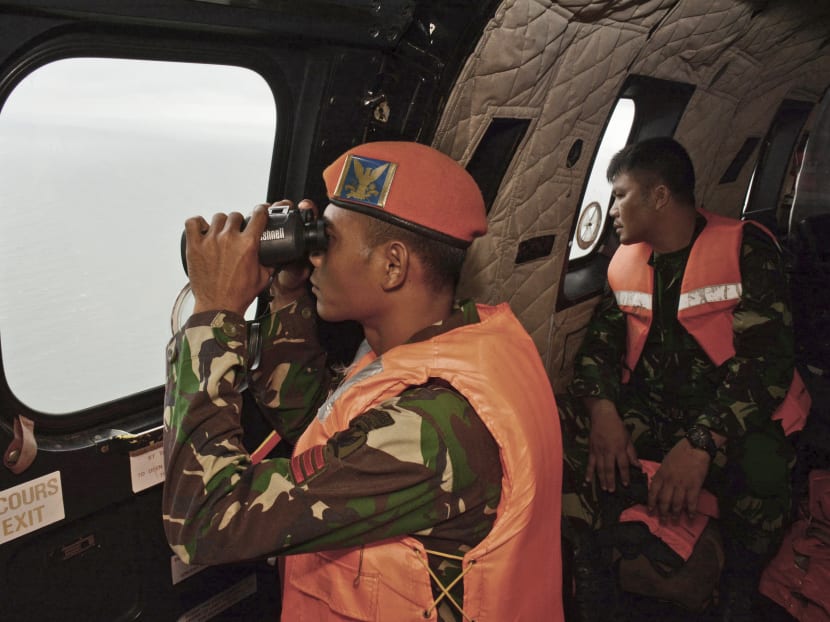AirAsia pilot’s final request was met by two-minute radio delay
JAKARTA — It took about two minutes for air-traffic control to respond to AirAsia’s ill-fated Flight 8501 when the pilot requested permission to fly higher, according to Indonesia’s air navigation operator.

A crewmember of an Indonesian Air Force Super Puma helicopter of 6th Air Squadron uses a binocular to scan the horizon during a search operation for the victims of AirAsia Flight QZ 8501. Photo: AP
JAKARTA — It took about two minutes for air-traffic control to respond to AirAsia’s ill-fated Flight 8501 when the pilot requested permission to fly higher, according to Indonesia’s air navigation operator.
In the final communication from the plane, one of the pilots asked to climb 38,000 feet, said Mr Wisnu Darjono, director at AirNav Indonesia, citing a transcript of the conversation from the National Transport Safety Committee. Air traffic control authorised the plane to ascend only to 34,000 feet about two minutes later, after which contact was lost, Mr Darjono said.
Accuweather.com data shows there were storms along the path of the plane, which Indonesia’s air transport director has said was flying at 32,000 feet (9,800m) There were six planes at different altitudes passing in the area at the time, which contributed to the delayed response, according to AirNav.
Air-traffic control “couldn’t immediately give permission to fly at 38,000 feet because checks needed to be made to see if there were other planes nearby,” Mr Darjono said in a phone interview. The “pilot didn’t reply”.
Radar data appeared to show that AirAsia made an unbelievably steep climb before it crashed, possibly pushing it beyond the plane’s limits, Reuters reported, citing an unidentified person familiar with the probe’s initial findings.
As divers seek to find the plane’s black boxes, those final minutes may provide crucial clues as to what caused the Airbus A320 plane to crash on Dec 28 with 162 people on board into the ocean near Pangkalan Bun, about 600 miles southeast of Singapore.
AirNav can’t publish the transcript, as only the National Transport Safety Committee has the authority to do so, Mr Darjono said. He declined to provide further details from the transcript.
Two minutes to answer a pilot’s request for permission to elevate is not necessarily unusual, depending on how much traffic a controller is watching, said Mr Bill Parrot, a retired airline pilot and associate professor of aviation at Lewis University in Romeoville, Illinois. In some busy markets, such as Chicago, a controller may be monitoring up to eight frequencies at once, he said.
“There is a point of time when a sense of urgency really is in the hands of a pilot,” he said. “If a pilot declares an emergency, they can do pretty much whatever they want to do.” BLOOMBERG






